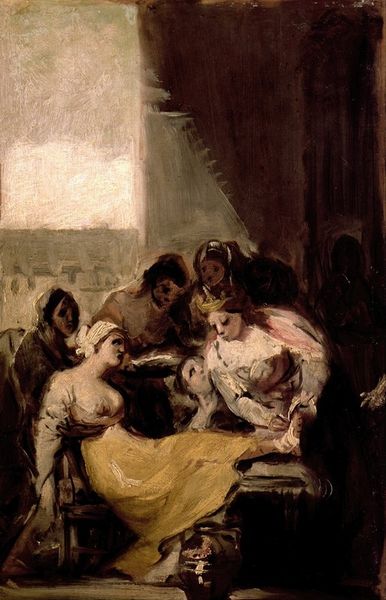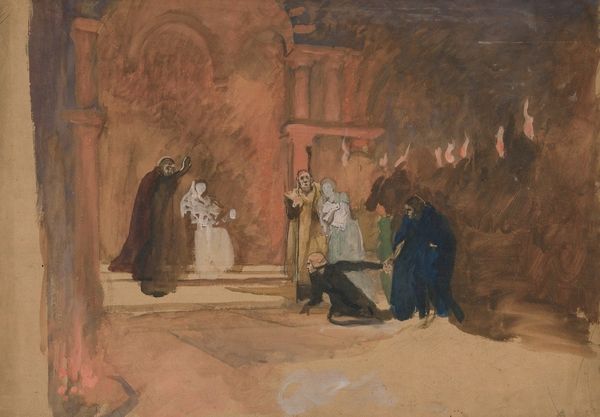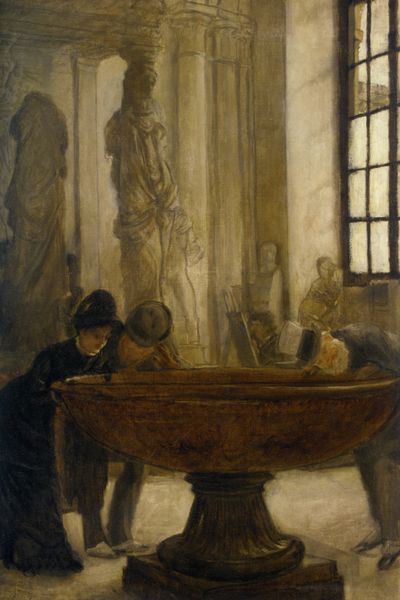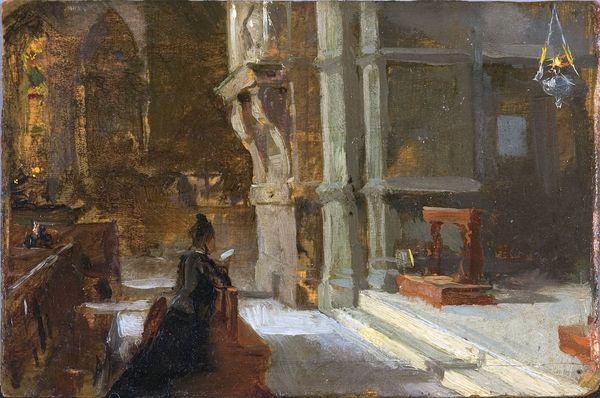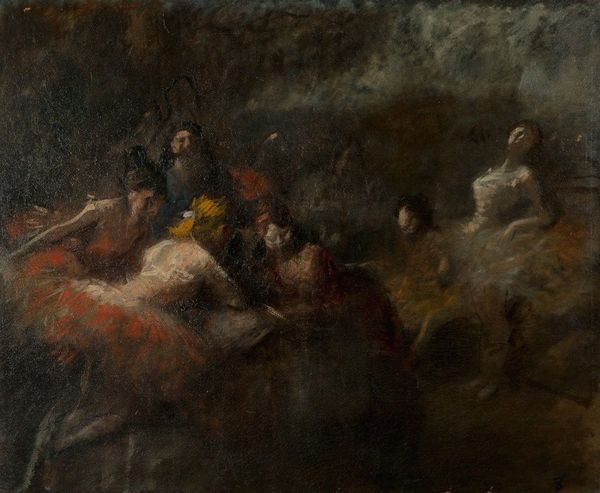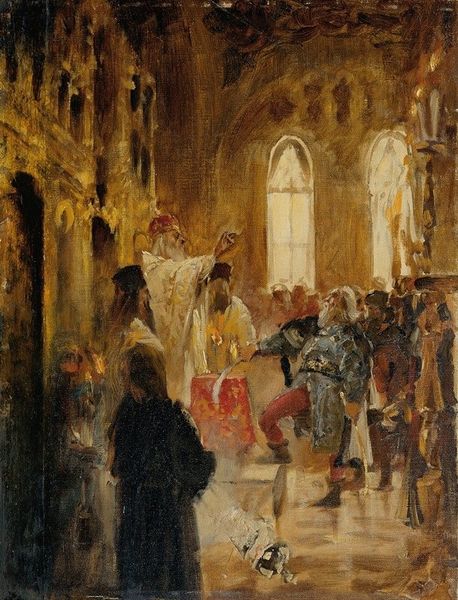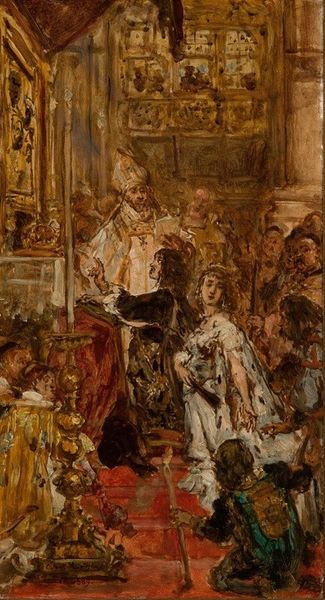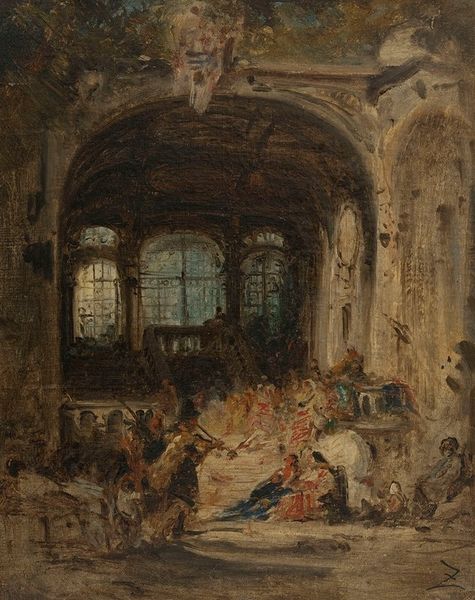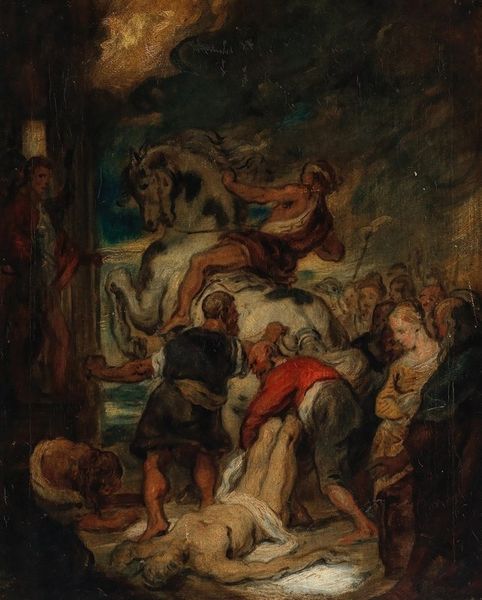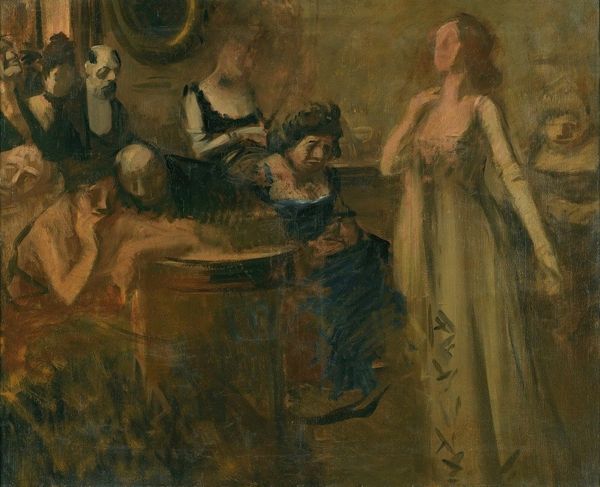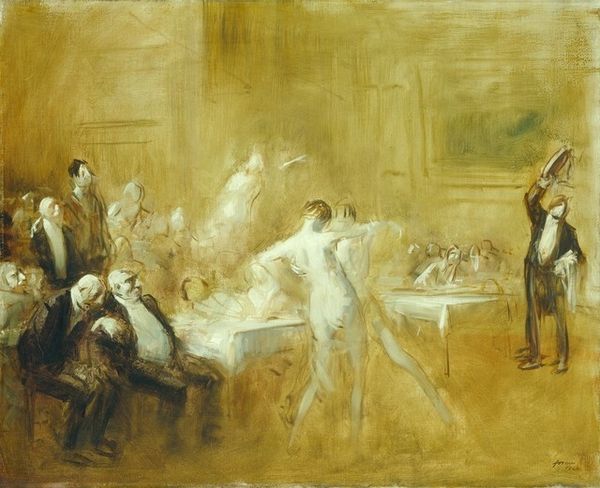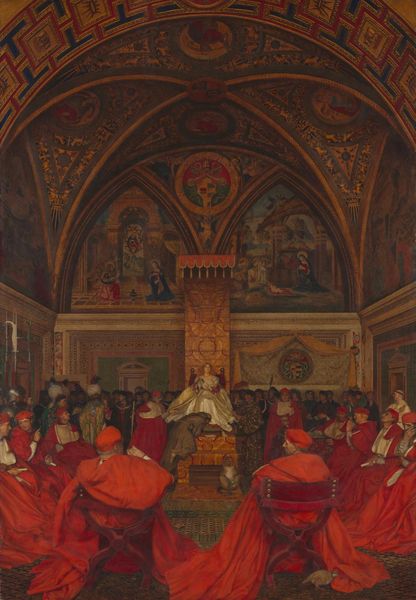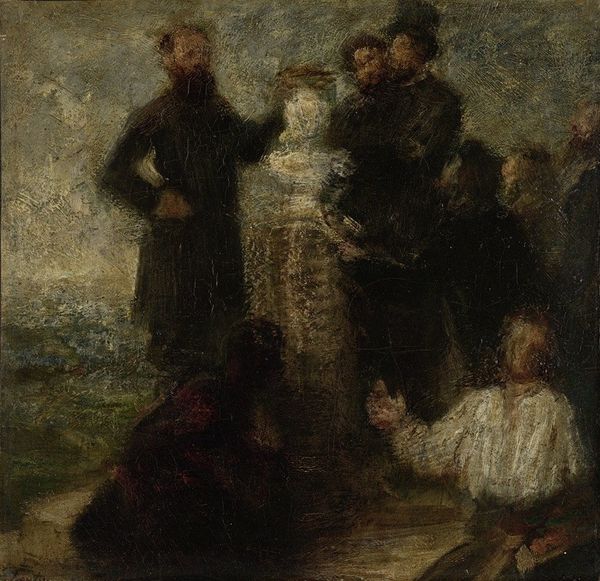
painting, oil-paint
#
figurative
#
baroque
#
painting
#
oil-paint
#
figuration
#
oil painting
#
romanticism
#
genre-painting
#
history-painting
Copyright: Public Domain: Artvee
Curator: So here we have "Interior Of A Church; Ordination Of Carmelites." The painting is an oil work attributed to Eugène Delacroix. Editor: My first impression? A theatrical hush, rendered in browns and hazy light. Like witnessing something sacred, but from a great distance. Curator: It has this dramatic almost baroque quality. But considering Delacroix’s context, I wonder about its relationship to the romantic movement as well. What draws me in is the play of light, guiding our eye to the altar. It gives everything a stage-like drama. Editor: The thing is, that kind of theatrical staging—all those crimson robes massed in the foreground – had a cost. Who dyed them? And with what? I wonder what the sourcing and labor were involved in producing the material for the garments featured, and who financed it all. These kinds of settings do not exist in a vacuum. Curator: A fair point. The richness could certainly mask unseen costs. But think about the devotional context: it's as if the materials are enlisted to inspire awe and devotion in those attending this religious event. The oil paint itself allows for the capturing and rendering of deep hues... Almost transporting one. Editor: Absolutely. Oil allows for these really luxurious, layered surfaces to accumulate that imbue a sense of the spiritual through the materials alone, just like the crimson dye did for its wearer. These material realities are embedded with power, whether we overtly recognize them or not. Curator: Exactly. Power reflected through ritual and tradition, but also maybe… through access to the finest pigments and textiles? I’d always looked at it as a dance between the spiritual and the spectacular. But you've made me think of its earthlier aspects as well. Editor: Every masterpiece is really built, brick by invisible brick, isn’t it? Curator: Indeed! And thanks to your insightful perspective, I will now be thinking of this piece through a new and complex lens, acknowledging the materiality that often remains unseen but nonetheless has shaped not just the creation of this, but other works in art history.
Comments
No comments
Be the first to comment and join the conversation on the ultimate creative platform.
